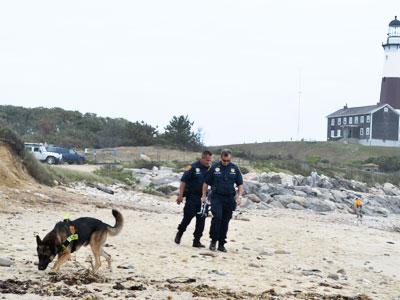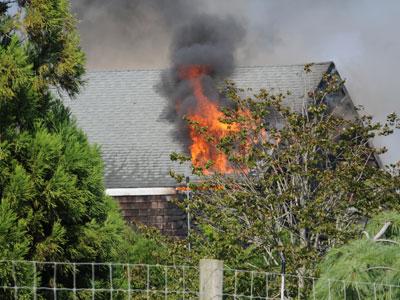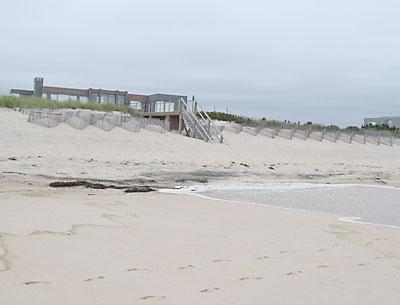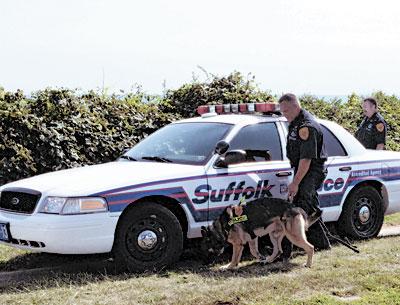Departments Fight Barn Fire off Long Lane
Departments Fight Barn Fire off Long Lane
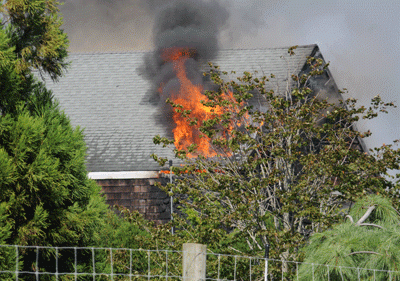
At about 1 p.m. Thursday, East Hampton Fire Department volunteers responded to a report of a barn on fire off Long Lane in East Hampton. The barn is apparently used by a landscaping company. An initial radio call identified it as 168 Long Lane, but that could not be immediately confirmed. Firefighters from the Springs and Sag Harbor departments were quickly called for help battling the blaze.
From a vantage point some distance away, black smoke could be seen rising above the roof. Flames were visible coming from the east side of the barn.
Thick coils of yellow-tinged smoke continued to come from the building's west wall as firefighters poured water onto the blaze. Efforts were being made to open skylights in the barn's roof to relieve some of the heat.
About an hour after the initial call, firefighters continued to work to get the blaze under control, with flames remaining in walls and ductwork.

